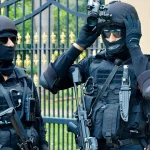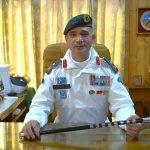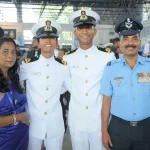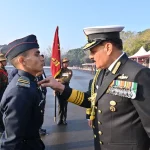Becoming a Garud Commando, a member of one of the most elite special forces units in the Indian Air Force (IAF), is not only a testament to unparalleled physical prowess and mental toughness but also a profound commitment to national service and security. With rigorous training, intensive assessments, and high expectations, the journey to becoming a Garud Commando is both exhilarating and challenging. This article outlines the intricate processes involved in becoming a Garud Commando, encapsulating the selection and training methods, roles and responsibilities, and the enduring significance of the unit in India’s defense landscape.
Historical Context
The inception of the Garud Commandos can be traced back to the late 1990s when the need for specialized forces within the Indian Air Force became increasingly prominent. The unit was officially established in 2004 in response to multifaceted threats to national security, particularly those involving terrorism and asymmetric warfare. The Garud units were conceived to enhance the air force’s capabilities in various operational scenarios, including counter-insurgency operations across diverse terrains such as forests, mountains, and urban settings.
Over the years, the Garud Commandos have evolved into an indispensable component of the IAF, capable of executing complex missions that require elite skill sets. Their operations have included not only combat missions but also humanitarian assistance and disaster relief operations, highlighting their versatility and commitment to securing both national and international interests.
Selection Process
The path to becoming a Garud Commando is divided into two primary tracks: for non-commissioned airmen and for commissioned officers. Each track involves a highly competitive and comprehensive selection process designed to identify individuals capable of excelling in demanding environments.
Non-Commissioned Post (Airmen)
For those pursuing the non-commissioned route, recruitment occurs directly through the Airmen Selection Centers across India. Here’s a breakdown of the crucial steps involved:
- Initial Recruitment Advertisement: The Indian Air Force releases advertisements inviting eligible candidates to apply.
- Physical Fitness Tests: Candidates must pass stringent physical fitness assessments, including running, push-ups, and sit-ups, to demonstrate their physical endurance.
- Psychological Evaluations: Psychological tests assess mental fortitude, resilience, and compatibility with the rigorous demands of a commando role.
- Interviews: An interview process is conducted to evaluate candidates’ motivations, commitment, and teamwork capabilities.
A significant aspect of this selection process is that it represents a one-time opportunity; any failure at any stage of training results in immediate elimination without a second chance. This strict policy ensures only the most dedicated and capable individuals are chosen.
Commissioned Officers
For those aspiring to become commissioned officers, the following steps are essential:
- Air Force Common Admission Test (AFCAT): Candidates must clear this exam, which assesses both general and technical knowledge essential for an officer’s role.
- Ground Duty Officer Course (GDOC): Successful candidates undergo training at the Air Force Academy in Dundigal, Hyderabad, where they acquire foundational military leadership skills.
- Advanced Training: Once commissioned into the Garud unit, officers receive advanced, specialized training tailored to their operational profiles.
This dual-track approach balances the need for both highly skilled airmen and versatile officers, reinforcing the operational capacity of the Garud Commandos.
Training Regimen
Once selected, the journey continues with an exhaustive training regimen designed to cultivate elite skills suitable for varied operational contexts. The training process is comprehensive, totaling approximately three years or 72 weeks, split into several rigorous stages.
Initial Probationary Training
The initial phase is a three-month probationary training period at the Garud Regimental Training Center located in Hindan, Ghaziabad. This phase serves as a filtering mechanism, with a remarkable attrition rate of 40-50% due to the demanding physical conditioning and basic military skills required.
- Physical Conditioning: Candidates drop weight, develop strength, endurance, and build resilience.
- Basic Military Skills: Essential military disciplines, including weapon handling and tactical drills, are introduced.
Advanced Training Phases
Following probation, the commandos undertake additional training phases, which encompass:
- Parachute Training: Conducted at the Parachute Training School in Agra, this element trains commandos in airborne operations, enabling them to conduct drops from various altitudes.
- Combat and Warfare Skills: Training in advanced combat techniques, jungle warfare, and counter-insurgency strategies occurs at reputed Army schools, including the Jungle Warfare School and Counter Insurgency and Jungle Warfare School (CIDWS).
- Diving and Amphibious Training: The commandos also receive training in diving techniques and amphibious operations at the Navy’s Diving School.
- Close Quarter Combat Techniques: Specialized training includes mastering close quarter combat techniques like Krav Maga, equipping commandos with highly effective self-defense and combat skills.
This multifaceted training ensures that Garud Commandos are not only physically fit but also intellectually agile, prepared to operate in any environment.
Organizational Structure
The organizational structure of the Garud Force is specifically designed for operational efficiency. It comprises flights of approximately 60 to 70 men, which are further divided into squads averaging around 14 soldiers. Each flight is led by officers of Squadron Leader or Flight Lieutenant rank, with the entire unit commanded by a senior officer holding a Wing Commander rank. This structure enables streamlined coordination and command during demanding missions, ensuring effective leadership and response strategies in the field.
Roles and Responsibilities
Garud Commandos are entrusted with a diverse array of responsibilities essential to national security. Their operational roles typically encompass:
- Counter-Terrorism Operations: Engagements aimed at neutralizing terrorist threats to protect IAF assets and personnel.
- Search and Rescue Missions: Upholding humanitarian values through operations designed to locate and extract personnel in distress.
- Combat Missions: Direct engagements in hostile environments, leveraging tactical superiority gained through rigorous training.
- Security of IAF Assets: Protecting vital air force installations and resources against potential attacks or incursions.
The commandos operate across diverse terrains, demonstrating versatility in environments ranging from dense jungles to snow-clad mountains and urban landscapes. Their involvement in peacekeeping missions, like those in Afghanistan and Congo, further underscores their capability to function globally, promoting peace and stability.
Statistical Data and Research Insights
Garud Commandos are characterized by several key statistics that highlight their operational paradigm and efficiency:
| Aspect | Details |
|---|---|
| Training Duration | Approximately 3 years (72 weeks basic + advanced) |
| Initial Training Location | Garud Regimental Training Centre, Hindan |
| Specialized Schools | Parachute School (Agra), Navy Diving School, Army Jungle Warfare School |
| Attrition Rate | 40-50% during initial training |
| Command Structure | Flights (~60-70 men), led by Squadron Leader; commanded by a Wing Commander |
| Selection Chances | One-time eligibility, no second chance |
| Key Skills Acquired | Parachuting, diving, close combat, jungle & snow warfare |
These statistics paint a vivid picture of the rigorous training module and the significant commitment required from aspiring Garud Commandos.
Challenges and Solutions
While the recruitment and training processes are designed to produce the best candidates, several challenges persist:
- High Attrition Rates: The challenging nature of the training means many candidates do not make it through, leading to a constant need for a talent pool.
- Solution: Enhanced preparatory programs in fitness and psychological resilience prior to recruitment could help candidates transition more effectively into the training phase.
- Operational Stress: The demands of special operations can lead to physical and psychological stress among commandos.
- Solution: Implementation of robust mental health support systems and regular psychological evaluations can aid in maintaining the overall well-being of commando teams.
- Adaptability in Diverse Environments: Training across varied landscapes requires constant adaptation to new tactics and survival skills.
- Solution: Continuous training updates based on feedback from recent missions and operations can help refine skills and techniques to meet evolving threats.
Future Trends and Predictions
As the nature of warfare continues to evolve with advancements in technology and changes in global politics, the roles of the Garud Commandos are expected to adapt accordingly. Future trends in special forces could include:
- Increased Technological Integration: The use of drones, advanced surveillance equipment, and digital warfare strategies will likely become essential tools in commando operations.
- Focus on Cyber Operations: With the rising threat of cyber warfare, we’re poised to see an increased emphasis on cyber capabilities among Garud units as they adapt to combat threats beyond traditional parameters.
- Joint Operations: Collaboration with other military and law enforcement agencies, nationally and internationally, might deepen, underscoring a unified response to terrorism and security threats.
Conclusion
The journey to becoming a Garud Commando is one marked by hardship, perseverance, and an unwavering commitment to one’s country. Through rigorous selection criteria, comprehensive training, and an evolving operational role, the Garud Commandos epitomize the elite spirit of the Indian Air Force. Their contributions to national security and international peacekeeping efforts remain invaluable, showcasing the resilience and skill inherent in India’s special operations forces. For those aspiring to join the ranks of these brave men and women, understanding the challenges, requirements, and responsibilities of this noble profession is essential. Preparing well initially, staying focused, and dedicating oneself to continuous improvement will be vital steps on the road to becoming a Garud Commando. Whether through books, courses, or counseling offered by platforms like SSBCrack and SSBCrackExams, each aspiring candidate must utilize available resources to best prepare for this noble calling in service of the nation.












